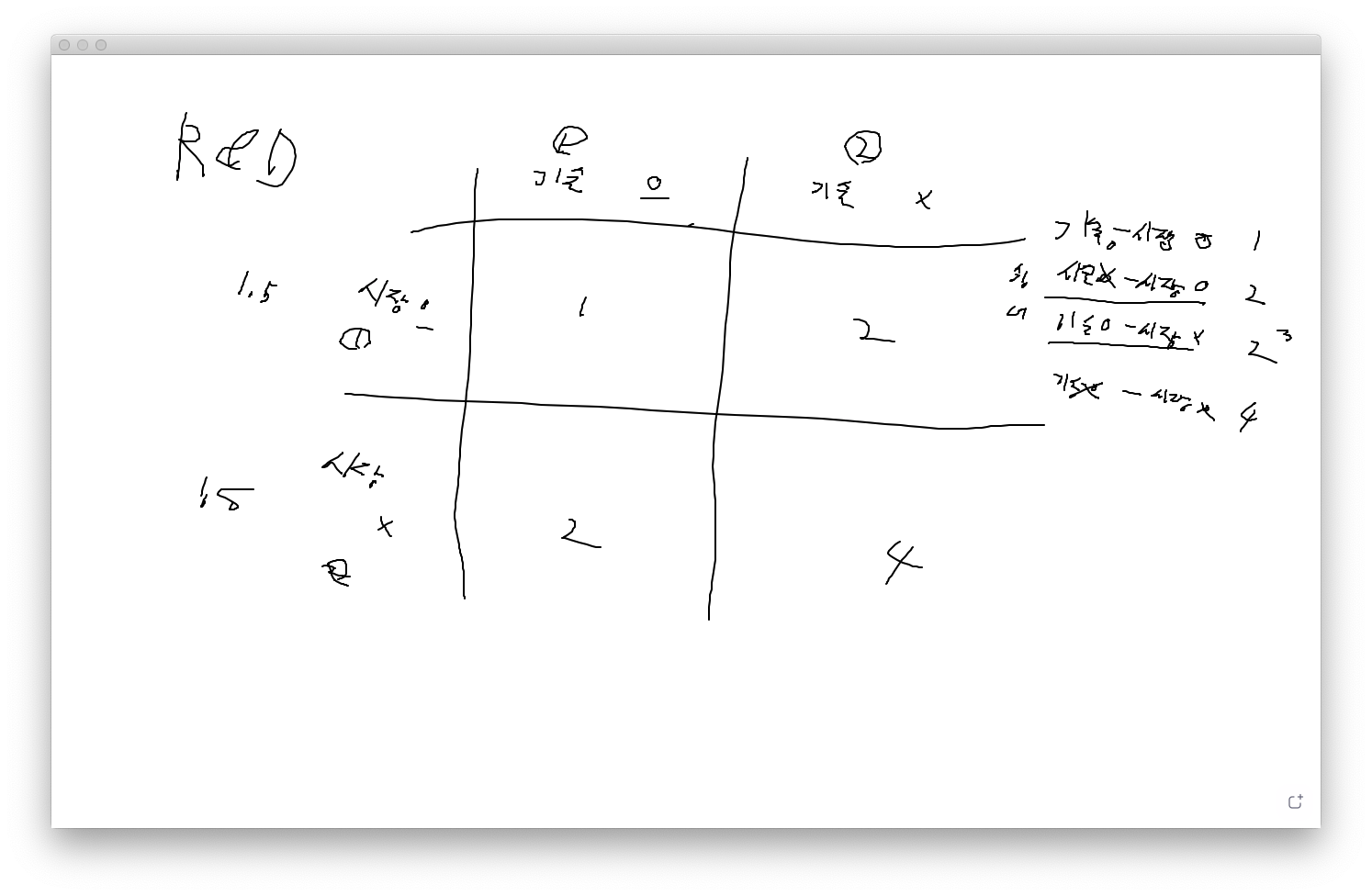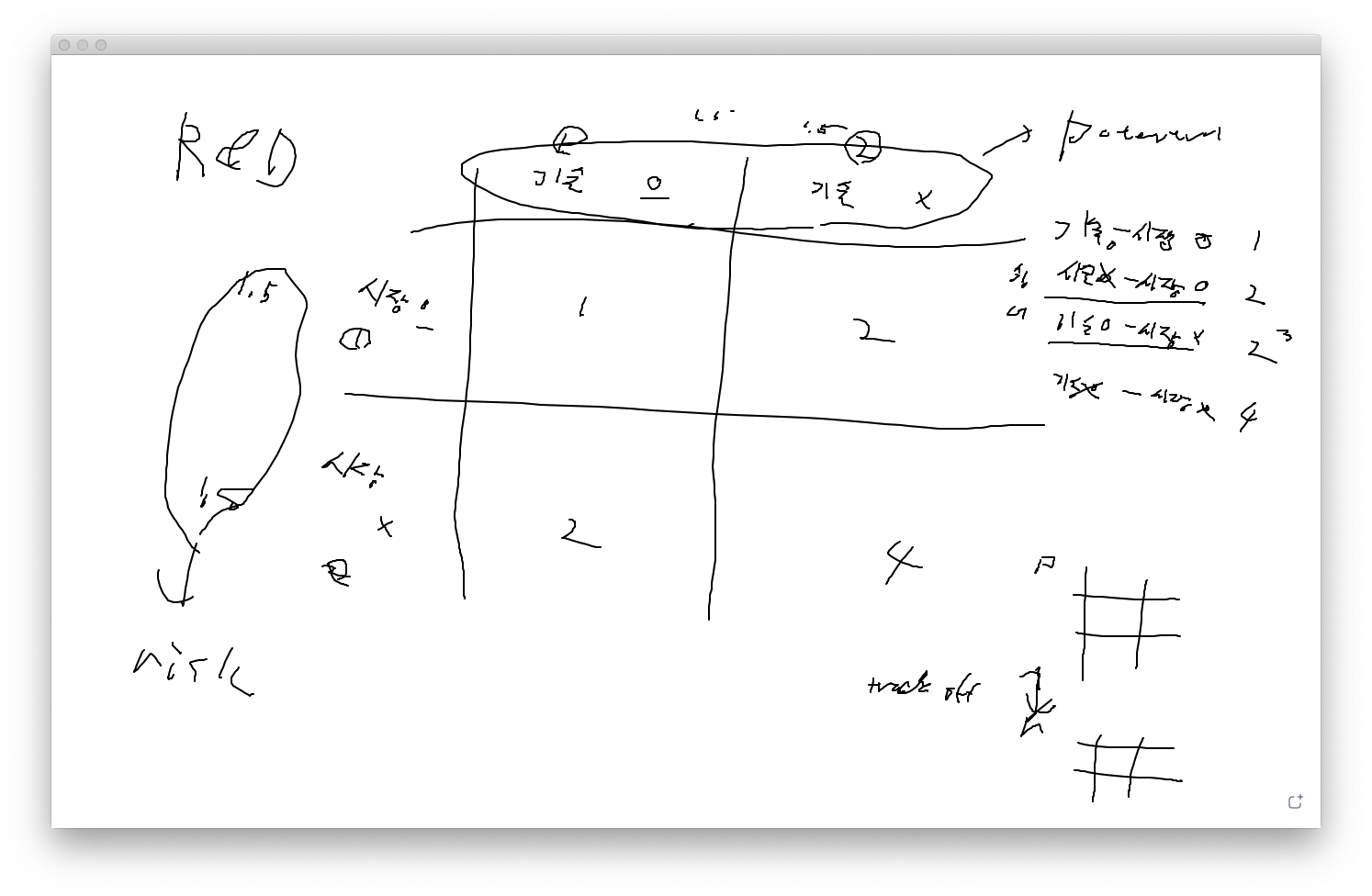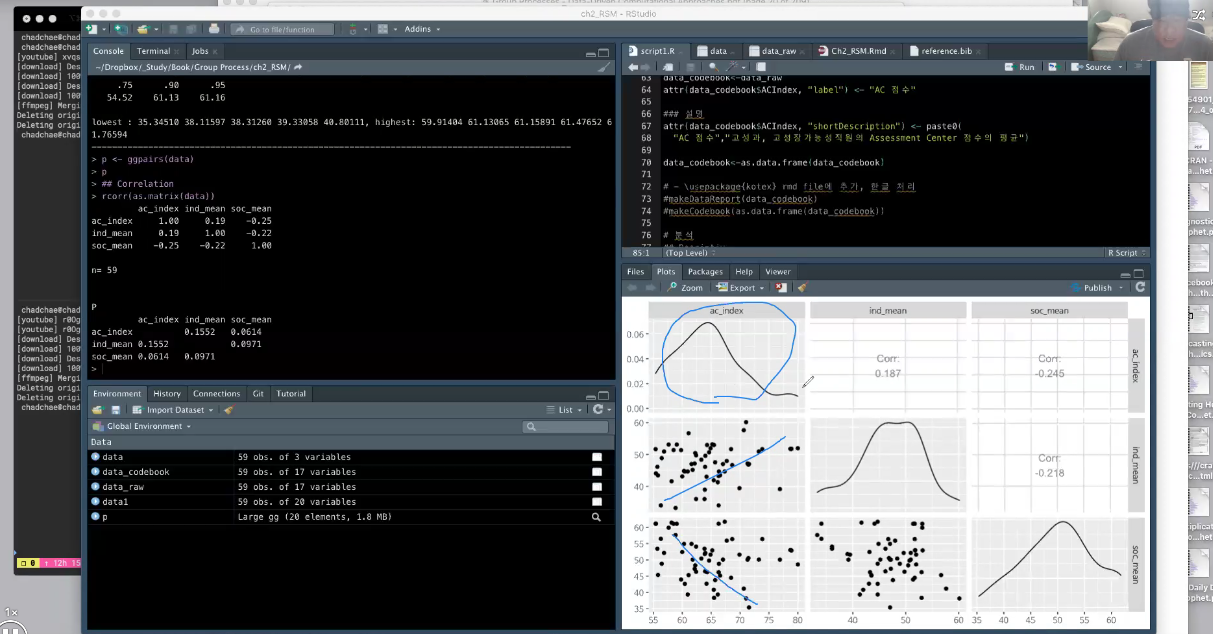3 Session 2: Respons Surface Model (REM)
3.1 내용정리
Introduction
- Using Response Surface Methodology (RSM) is a lot like being a chef, mixing together different combinations of ingredients to see which ones come together to make the best dish.
- In this situation, strict linear thinking no longer applies
- Chefs must find that perfect amount of salt that takes their dish from acceptable to exceptional
- with the advent of Big Data providing virtual Petri dishes of human behavior, RSM has garnered new interest in the social sciences for its ability to answer questions about complex group interactions
- To conduct an RSM test, there are typically five consecutive steps to go through: (1) the regression modeling, (2) lack of fit, (3) coding of variables, (4) canonical analysis, and (5) ridge analysis
Regression Modeling
- The most common and most useful RSM design is the second-order model because it is flexible (i.e., not limited to linear trends), easy (i.e., simple to estimate using least-squares), and practical (i.e., has been proven to solve real world problems; Myers et al., 2009).
Lack of fit
- Lack of fit is how well predicted repeated observations match the observed data. In other words, lack of fit of the second-order model indicates that the predicted values of the data do not look like the observed values
Coding of Variables
- Despite requiring variables to be measured at the interval or ratio level, RSM does not simply examine multiple sets of linear relationships. Instead, RSM conducts an experiment of sorts, and organizes variables into conditions to see which results in the optimal output. As such, to make it easier to conduct the canonical analysis (Step 4) and ridge analysis (Step 5), recoding values is a convenient way to examine the response shape at multiple values of the independent variables.
- Using a coding method that makes all coded variables in the experiment vary over the same range is a way of giving each predictor an equal share in potentially determining the steepest-ascent path
Canonical Analysis
- The pur- pose of the canonical analysis is to determine the overall shape of the data. For a first-order model, this is typically done through a method of steepest ascent or descent, wherein a linear shape determines which region of values creates an opti- mal response. However, for a second-order model, the shape can look more three- dimensional given the addition of interaction and polynomial terms
Ridge Analysis
- Often when a saddle point is found, or if the researcher wants additional informa- tion regarding a maximum or minimum point, a ridge analysis can be performed. The purpose of a ridge analysis is to “anchor the stationary point inside the experimental region” and to give “some candidate locations for suggested improved operating conditions” (Myers et al., 2009, p. 236).
- In other words, the ridge analysis provides an estimated response value of y for each of the different values in the independent variables.
3.2 생각정리 (미팅내)
실제 기업에서는 어떤 데이터가 가능, 이슈를 먼저 고민
- Big data TF, 고민 포인트, 차별화 포인트, 이직, 퍼포먼스, KPI
현업에서는 그떄 그때 결정 one hot, R&D의 고민
그룹셋팅에서 디지털 데이터(게임, 시뮬레이션 데이터) 현업에서 쓰는지, 설계 자체가 힘들수도
- CHO는 그런쪽으로 생각을 하는데, 서포트를 해야 함
- 신입사원 HPI(전략), 임원(AC&DC)
유사한 데이터를 라이커트 척도, 로데이터로 하는거랑 어떻게 다른지 실험
데이터 디자인
상황
- 팀장 디벨롭먼트를 위해 팀 단위의 경영전략 시뮬레이션을 수행 (팀 인터엑션)
- 팀단위 조직개발 프로그램 (OD진단), 팀단위 조직문화 서베이(팀단위) eDISC 활용, 팀의 역동
- 현업만족도, 인게이지먼트 서베이, 비포 & 에프터
팀연구
- 팀 퍼포먼스, 컴포지션,, 등등… 잘 설명 못함
- 좋은 게임이나 시뮬레이션이 많음에도 잘 활용을 못함
- 남들이 하는 흔한 또는 쉬운 어프로치를 선호 > 인사이트?
- Gamification, 컨텐츠 자체를 시뮬레이션을 통해 배우는 상황에서
- HR현상을 팀 디자인으로 풀려고 하면
이 방법을 적용해 볼 수 있는 이슈/문제들
- Cognitive, Affective, 그룹 퍼포먼스, 리더십, 개인의 특성
- High performing team
- 기존 기업에서 쓰는 것들이 개인진단, 그룹의 다이내믹스
- 팀의 아다리와, 캐미 - (기존 서베이는 그게 없음), 평균을 활용
- 하이퍼포먼스 팀, 앞단에 이슈가 중요
미팅시간
- 한국 오전11시, 텍사스 저녁9시, 오레곤 저녁7시
- 2주에 1번 미팅
이 방법론의 어드벤티지 적용가능 포인트, 브레익쓰루


3.3 더 읽어볼 자료
- Raymond H. Myers (1999) Response Surface Methodology—Current Status and Future Directions, Journal of Quality Technology, 31:1, 30-44, DOI: 10.1080/00224065.1999.11979891(Myers 1999)
- William J. Hill & William G. Hunter (1966) A Review of Response Surface Methodology: A Literature Survey, Technometrics, 8:4, 571-590(Hill and Hunter 1966)
- Lenth, R. V. (2009). Response-surface methods in R, using rsm. Journal of Statistical Software, 32(7), 1-17.(Lenth and others 2009)
